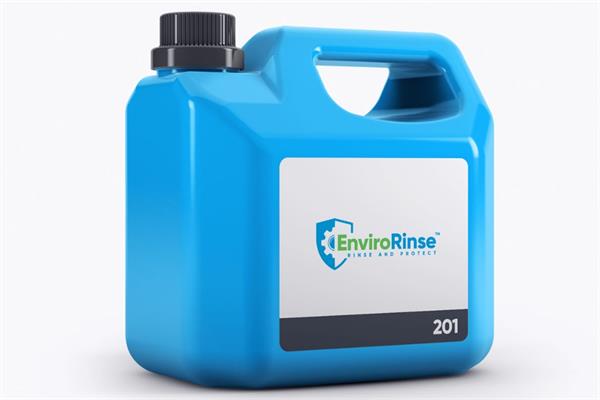
The rinsing solution EnviroRinse™ 201 from Lake Engineering Solutions can deliver long-term corrosion protection and simplified maintenance for aqueous parts washing and degreasing machines.
Lake Engineering Solutions has developed EnviroRinse™ 201 (ER201), a rinsing solution for aqueous parts washing and degreasing machines with dual tanks. The product is designed to provide long-term post-corrosion protection in the aqueous parts washing and degreasing process.
EnviroRinse™ 201 can be used in immersion tanks, offering good protection against multi-metal corrosion. It leaves a very thin, dry film on the metal surface, which is undetectable and easily removed by washing or immersion in an alkaline solution. This eliminates the need for lengthy, aggressive cleaning programs required by oils and other rust inhibitors.
ER201 is a concentrate that is diluted to 5% to create a water-based corrosion inhibitor for rinsing and increased corrosion protection. This reduces the number of process steps, as corrosion protection is incorporated into the washing and degreasing process during the rinse cycle of the machine.
EnviroRinse™ 201
Technically, EnviroRinse™ 201 is a water-based, low-foaming rinse aid that provides corrosion resistance on assembly parts for up to 2 years. After extensive testing in an aqueous rinse tank, ER201 was found to be stable over 4 weeks, with minimal foaming and no rinse tank alarms. The dosing pump was set to inject 20 ml of ER201 at each rinse cycle into the tank to maintain the concentration without manual addition during the four-week testing period.
Lake Engineering Solutions provided a full SOP and training when ER201 was implemented on the machine. This promoted good practice for part handling, and solution monitoring is now minimal, as it is carried out through an automated process with the machine's water top-up and dosing pump. Comprehensive data supports the effectiveness of the automated dosing system and laboratory data supports EnviroRinse™ using industry ASTM standards (ASTM D4627-92: Iron Chip Corrosion for Water-Dilutable Metalworking Fluids and ASTM D1748-10: Rust Protection by Metal Preservatives in the Humidity Cabinet).
Dosage System
The dosing system is set to inject 20 ml of concentrate with each rinse cycle. Approximately 12-14 cycles are carried out each day, resulting in a consumption of 240-280 ml through the dosing system. The dosing level was calculated after the first week of manual additions to the rinse tank to maintain the concentration. The dosing system now maintains the required level together with the automatic water filling.
Additionally, both tanks are equipped with MIN/MAX switches to adjust the automatic water filling depending on the level of the tanks, which is directly reflected in the concentration.
Evaluation of Corrosion Protection
EnviroRinse™ 201 has been evaluated as a rust preventative treatment. The test methods employed are as follows:
- ASTM D4627-92 - Iron Chip Corrosion for Water-Dilutable Metalworking Fluids: This test determines the minimum concentration of a rust preventative solution required to inhibit corrosion on small iron chips. Solutions of EnviroRinse™ 201 are diluted at 0.5%, 1.0%, 1.5%, 2.0%, 2.5%, and 3% in hard water. 50 ml of each concentration is poured into petri dishes containing a filter paper disc. Iron chips are sprinkled onto the filter paper disc in each petri dish and distributed evenly to achieve full immersion in the solution. All dishes are covered and allowed to stand for 24 hours. The filter papers are then removed, rinsed under running water, and allowed to dry.
- ASTM D1748-10 - Rust Protection by Metal Preservatives in the Humidity Cabinet: This industry standard test assesses temporary corrosion protection during storage/transport. It tests for corrosion resistance in 100% humidity environments at 49°C (120°F). A steel panel treated with a rust preventative is deemed to pass after 100 hours of exposure.